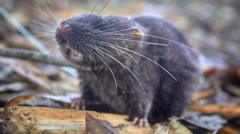In a groundbreaking expedition led by Conservation International alongside local Indigenous groups, researchers have identified 27 new species in Peru's Alto Mayo region, a significant area encompassing parts of the Amazon rainforest. Among the notable discoveries are an amphibious mouse with webbed feet and a peculiar "blob-headed" fish. While a thorough investigation may reveal up to 48 additional species, the current findings already underscore the rich biodiversity of this protected area, which faces threats from human activity such as deforestation and agricultural expansion.
Trond Larsen, Senior Director at Conservation International, expressed wonder at the number of species uncovered despite the human-influenced landscape. The expedition included contributions from local Indigenous communities, particularly the Awajún people, who possess extensive traditional ecological knowledge. Yulisa Tuwi, an Awajún participant, remarked that the findings empower her community to safeguard their culture, resources, and lands, emphasizing their historical connection to the ecosystems.
The new species catalog includes a dwarf squirrel measuring just 14 cm, eight distinct fish species, three types of amphibians, and 10 new butterflies. The newfound dwarf squirrel is especially small, comparable to a palm-sized pet, and exhibits a beautiful chestnut-brown coloration. The expedition also documented a spiny mouse, noted for its stiff guard hairs that resemble hedgehog spines, as well as a rare amphibious mouse that primarily feeds on aquatic insects, a rarity within the rodent family.
Furthermore, a newly identified type of climbing salamander was observed thriving in a localized habitat with unique white sand, showcasing the diverse adaptations of wildlife within the region. With each discovery, the partnership between science and Indigenous knowledge reinforces the urgency to protect ecosystems while celebrating the heritage of those who have lived in harmony with nature for centuries.


















